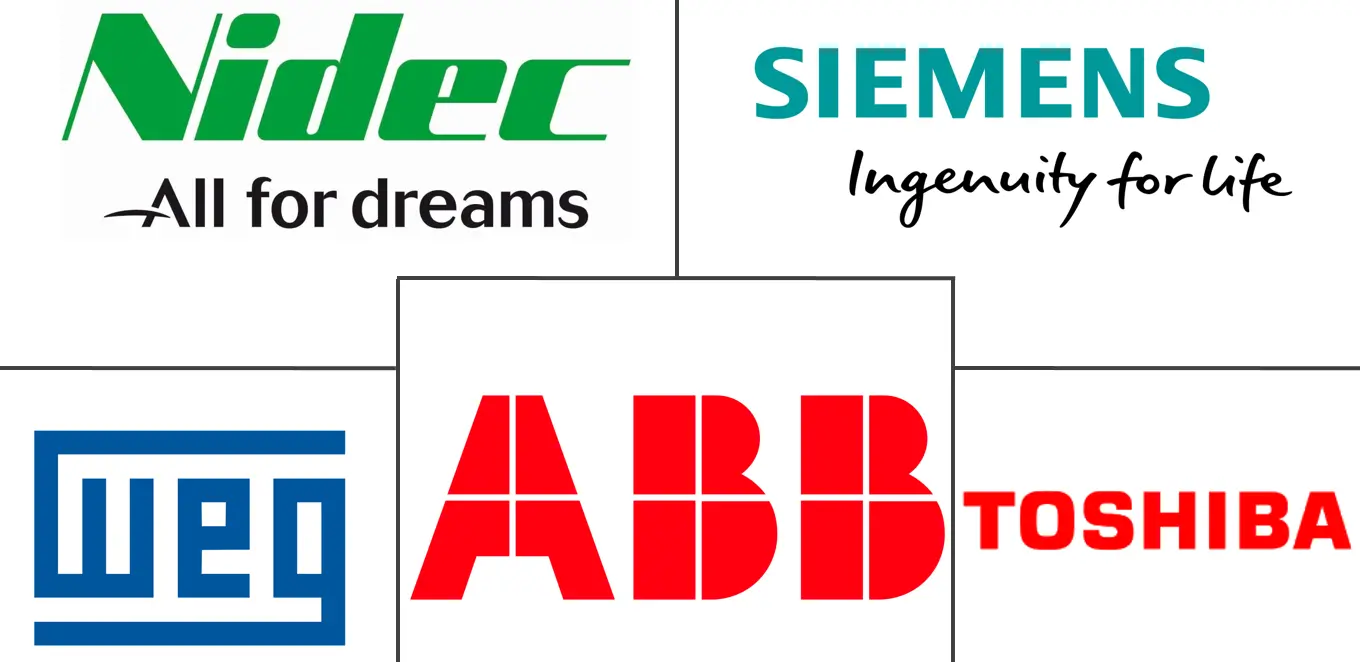Asia-Pacific AC Electric Motor Market Size and Share
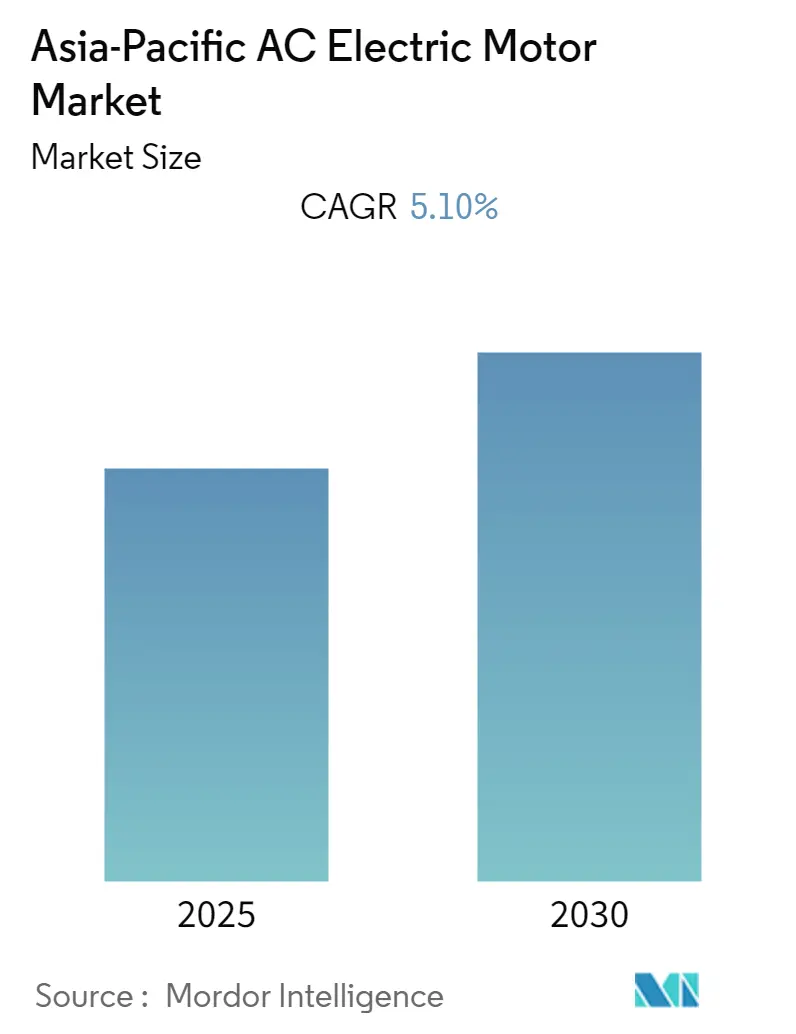
Asia-Pacific AC Electric Motor Market Analysis by Mordor Intelligence
The Asia-Pacific AC Electric Motor Market is expected to register a CAGR of 5.1% during the forecast period.
- Electric vehicles are expected to boost the growth of the market studied over the forecast period. The number of new EV cars registered in the Asia Pacific hit an unprecedented market share in 2019, with the developed economies supporting this trend. With the leading automotive companies increasingly adopting AC electric motors into EVs, the regional demand is expected to increase, thus driving the market growth.
- In May 2019, the American Chamber of Commerce in China found that 40% of its surveyed members had either begun to shift their production facilities outside of China or were thinking of moving their production out of the country. Of those planning to leave the country, more than half listed Southeast Asia as the prime location they consider relocating. This will further boost Southeast Asia's industrial production, therefore driving the growth of the market.
- Manufacturers across the Asia Pacific region have been identified to integrate PMAC motors into their manufacturing facilities, to increase the plant's operational efficiency. It has been proved that PMAC motors operate with around 4% higher productivity at full speed, 7%-12% higher efficiency at half the pace, and about 24% higher efficiency at 1/6th speed, as compared to conventional motors.
- Major manufacturers are switching to PMAC motors in the region, also creating opportunities for the market. For instance, in September 2019, Tata Motors announced the use of a PMAC motor in its new range of EVs to replace the AC induction motor it has employed previously. Tata Motor's previous EV, the Tigor EV, had a 30kW 72V AC induction motor coupled with a 16.2kWh battery, giving it a maximum range of 88 miles. The new Ziptron EV, using a PMAC motor, claims to have a range of 155 miles with fast charging capability.
- The industrial sector in Asia-Pacific is also expected to witness massive growth due to various government initiatives like 'Make in China 2025' and 'Make in India,' which may promote the usage of AC electric motors, thereby driving its growth in the region.
- Industrial manufacturing companies are grappling with the immediate effect of the COVID-19 pandemic as both their manufacturing and supply chain operations are disrupted, and their customers' operations face similar threats. This exponentially affects the whole supply and distribution network, hitting Industrial Equipment companies with a lag. This will act as a significant challenge for the Asia-pacific AC electric motor market for a considerable period.
- According to World Bank statistics, China's industrial production is expected to decrease by 22.6% compared to the previous year. The effect of COVID-19 containment measures is visible in data on industrial production in China, which has fallen by 13.5% in January and February combined, compared with the previous year.
Asia-Pacific AC Electric Motor Market Trends and Insights
Low Voltage Segment is Expected to Grow at a Significant Rate Over the Forecast Period
- The industry standards for low voltage motors vary widely. Several manufacturers have different classifications of motors that are considered to be low voltage motors. However, according to the International Electro-technical Commission’s (IEC) IEC 600038 standard, any motor with a rating of up to 1000 V is considered a low voltage (LV) motor.
- Compared to other motors in the market, low voltage motors have a wide range of applications across multiple industries. Some of the primary usages of low voltage motors are the midstream and downstream oil and gas industry, water and wastewater industry, food and beverage industry, etc.
- Companies like Wolong, ABB, and Siemen are the major producers of low voltage AC electric motors in the current market scenario controlling almost 50% of the sales in the region. Also, several technological developments and increasing demand form virtually all the end-user segments are expected to create considerable demand for these motors in the future.
- Demand for low voltage AC motors in water treatment is exceptionally high from the Asia Pacific region, owing to high demand from China. Over the forecast period, China is expected to be one of the fastest-growing markets for low voltage motors due to increasing industrial activity.
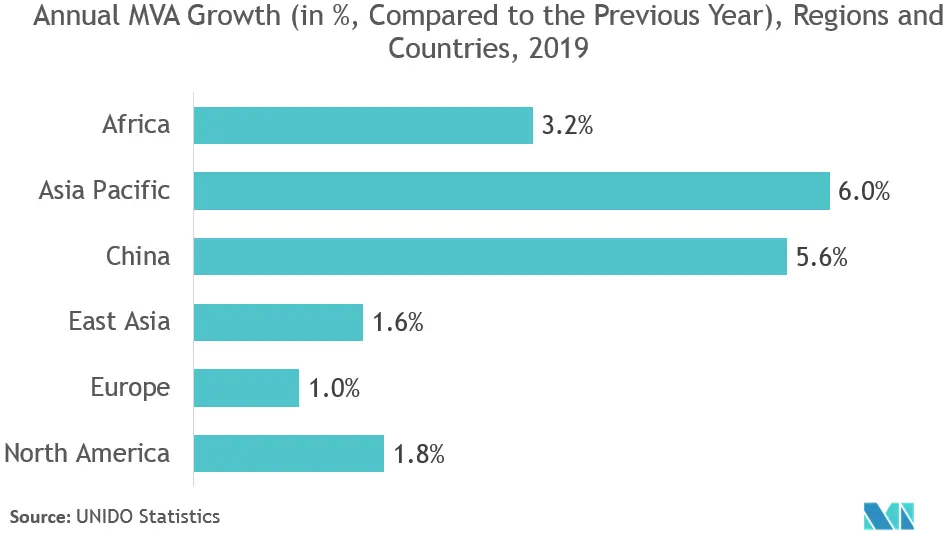
Oil & Gas Industry Segment is Expected to Hold a Significant Share Throughout the Forecast Period
- Motors are an integral part of the oil and gas industry, widely used in different elements such as drill rig and powering pumps in the refineries. These motors are made explosion-proof with improved efficiency to meet industry standards. With the increasing investment in oil and gas upstream and midstream sectors, the AC motor is expected to witness high growth over the forecast period.
- Furthermore, the oil and gas upstream companies are gradually investing in the oil production activity, which will boost the replacement rate of AC electric motors, thereby bolstering the market growth.
- For example, an Indonesian state-owned oil and natural gas corporation, Pertamina, has invested approximately USD 2.5 billion in 2019 with the upstream activity.
- The outbreak of the COVID-19 has added a significant layer of uncertainty to the global oil market outlook at the start of the forecast period. In 2020, the oil demand is expected to contract for the first time since the major global recession of 2009. In this case, oil demand in China suffers a lot in the first quarter, with a YoY fall of 1.8 million barrels per day, where the global demand drops by 2.5 mb/d. This will affect the growth of this segment slightly.
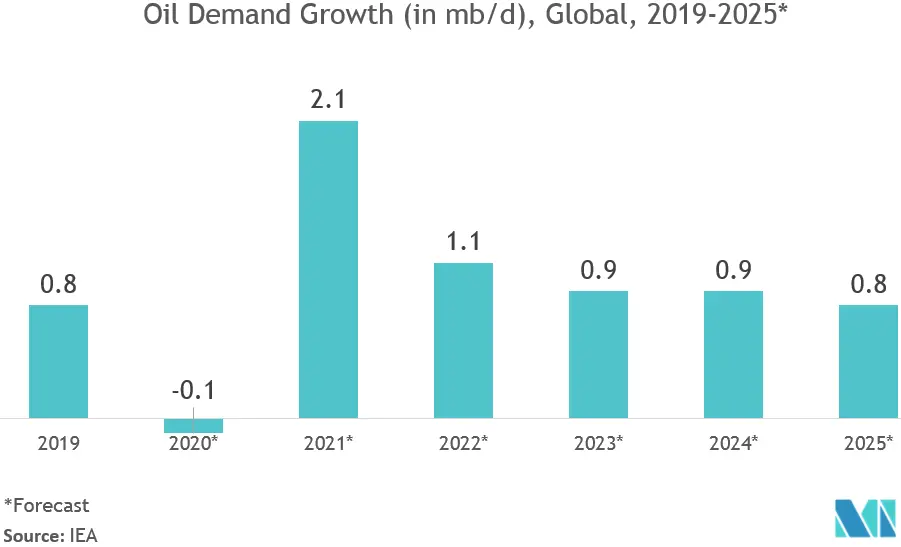
Competitive Landscape
The Asia-Pacific AC electric motor market is moderately competitive and consists of a significant number of global and regional players. These players account for a considerable share in the market and focus on expanding their customer base. These vendors focus on the research and development activities, strategic partnerships, and other organic & inorganic growth strategies to earn a competitive edge over the forecast period.
- In April 2020, Wolong had launched the new series of TEFC motors, which are of reliable Schorch quality in a compact design. The innovative rib-cooled TEFC motor is created in the long tradition of the KA series. These newly developed motors have reduced motor weights, lower noise, and higher efficiencies, helping to minimize environmental impact related effects.
- In May 2020, Regal Beloit, a manufacturer of electric motors, announced the launch of Regal Perceptiv intelligence. 'Regal Perceptiv intelligence' is a new way of using and interacting with motor products and services. 'Perceptiv intelligence' is an interconnected smart, digital solution that can empower customers when engaging with the company's products, to maximize plant production and equipment reliability.
Asia-Pacific AC Electric Motor Industry Leaders
-
ABB Ltd.
-
Siemens AG
-
Toshiba Industrial Products and Systems Corporation
-
Nidec Corporation
-
Weg SA
- *Disclaimer: Major Players sorted in no particular order
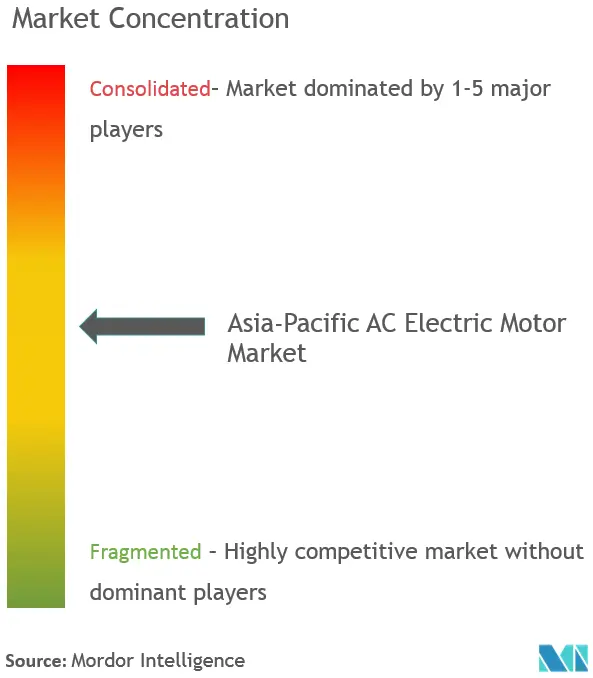
Asia-Pacific AC Electric Motor Market Report Scope
Recent technological advancements and implementation of government policies like Minimum Energy Performance Standards (MEPS) in several Asia-Pacific countries gave rise to energy-efficient motor systems, therefore increasing the market share of the AC electric motors. The market scope of Asia-Pacific AC electric motors tracks down the adoption of different AC motor types used by several end-user industries such as oil & gas, chemicals & petrochemicals, power generation, etc. The study also focuses on the impact of COVID-19 on the market ecosystem. In the report scope, the existing vendor landscape also covered, which consists of major players operating in the market.
| Low |
| Medium |
| High |
| AC Induction/Asynchronous |
| AC Synchronous (including PMAC) |
| Oil & Gas |
| Power Generation |
| Water & Wastewater |
| Food & Beverage |
| Other End User Industries |
| China |
| India |
| Japan |
| Australia and New Zealand |
| Rest of Asia Pacific |
| Voltage | Low |
| Medium | |
| High | |
| Type of Motor | AC Induction/Asynchronous |
| AC Synchronous (including PMAC) | |
| End User Industry | Oil & Gas |
| Power Generation | |
| Water & Wastewater | |
| Food & Beverage | |
| Other End User Industries | |
| Country | China |
| India | |
| Japan | |
| Australia and New Zealand | |
| Rest of Asia Pacific |
Key Questions Answered in the Report
What is the current Asia-Pacific AC Electric Motor Market size?
The Asia-Pacific AC Electric Motor Market is projected to register a CAGR of 5.1% during the forecast period (2025-2030)
Who are the key players in Asia-Pacific AC Electric Motor Market?
ABB Ltd., Siemens AG, Toshiba Industrial Products and Systems Corporation, Nidec Corporation and Weg SA are the major companies operating in the Asia-Pacific AC Electric Motor Market.
What years does this Asia-Pacific AC Electric Motor Market cover?
The report covers the Asia-Pacific AC Electric Motor Market historical market size for years: 2019, 2020, 2021, 2022, 2023 and 2024. The report also forecasts the Asia-Pacific AC Electric Motor Market size for years: 2025, 2026, 2027, 2028, 2029 and 2030.
Page last updated on:
Asia-Pacific AC Electric Motor Market Report
Statistics for the 2025 Asia-Pacific AC Electric Motor market share, size and revenue growth rate, created by Mordor Intelligence™ Industry Reports. Asia-Pacific AC Electric Motor analysis includes a market forecast outlook for 2025 to 2030 and historical overview. Get a sample of this industry analysis as a free report PDF download.
